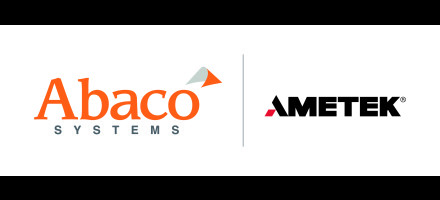Ethernet switches: Smarter than you think
StoryOctober 16, 2017
Ethernet switches are so fundamental to our connected world that they sometimes get taken for granted. Attention focuses on splashy end products - like weapons systems and the gee-whiz applications that drive them - rather than on the lower-level components that actually make the applications work.
Ethernet switches are so fundamental to our connected world that they sometimes get taken for granted. Attention focuses on splashy end products – like weapons systems and the gee-whiz applications that drive them – rather than on the lower-level components that actually make the applications work.
As networks become more pervasive in aerospace and defense platforms, Ethernet technology is coming into its own, both as the common denominator between different bus dialects and – increasingly – as the basic communications framework for data processing.
High-end applications like synthetic aperture radar (SAR) suck in massive amounts of data, which must be processed rapidly in order to be useful. This reality drives the need for lightning-fast data exchange between processing nodes and calls for the speediest switches. In another situation, combat-vehicle situational awareness applications might prize size, weight, and power efficiency over sheer speed. At both ends of the spectrum, military users want highly granular switch control. Both types of applications have benefited from the technology’s evolution.
Switch evolution
As Ethernet technology has proliferated, switch products have adapted to fill each niche in the ecosystem. There are low-bandwidth/low-power units, managed and unmanaged switches; commercial hardware; standalone, hardened tactical switches; and higher-throughput backplane cards. Speeds range from a single gigabit/sec up to 40 gigabits/sec per port.
The hardware has shrunk from large boxes to easy-fit backplane cards and small ruggedized units. Finer-grained lithography has enabled semiconductor manufacturers to squeeze more transistors onto chips, increasing speed and performance while reducing power draw.
This shrinking of transistor size drives integration, allowing more functions to be incorporated into a piece of silicon via system-on-chip (SoC) configurations. SoC-style switches enable designers to integrate conventional processors into the chip set of the specialized switching silicon, which is the “switch fabric” that decides how, when, and where to forward incoming data packets.
SoC switches mean that functions such as switch management can be handled by the switch fabric without a separate CPU. Finer-grained lithography means that the switches can be smaller or can feature more ports. From a systems perspective, higher port density means fewer required switches, thereby reducing overall power consumption and physical footprint.
Software side
Switches come in many flavors, some more attuned to military needs than others. Take managed versus unman-aged units, for example: Unmanaged switches are designed to let nodes communicate in a predetermined manner; a managed programmable switch, by contrast, is more flexible and more controllable, and therefore is more suited to military needs.
Managed switches can be configured and reconfigured and allow a high level of user control, with features such as traffic monitoring, security, priority/sensitivity handling, failover mechanisms, and built-in test.
In the security domain, managed switches can provide access control to individual ports, data on users connecting to and disconnecting from the ports, denial-of-service protection, and filtering of untrusted messages.
Illustrating the range of today’s switch technology are the RES3000 rugged enclosure and the SWE540 6U VPX card from Abaco Systems, both of which run Abaco’s OpenWare switch-management software. The RES3000 is a tactical switch, with 12, 24, or 28 Ethernet ports (Figure 1), while the 6U VPX SWE540 data plane Ethernet switch provides as many as twenty 40 gigabit/sec ports.
Figure 1: The Abaco RES3000 is a fully managed Ethernet switch offering as many as 28 ports.
Military versus commercial
While Ethernet switches abound, the military has some special requirements that benefit from in-depth, software-based control. One example is that the military uses multicast – or one-to-many – which is less common in a commercial environment such as telecommunications.
Another specialized military requirement is the absolute demand for security. Therefore, military users must have such features as access control not only in operations, but also in maintenance, so that only the person with the proper authority can change the system’s configuration.
The military also focuses on more than keeping a connection up: For adequate command and control, the military user has an urgent need to know why and where a node went down and to instantly restore bandwidth. A combat-vehicle operator can’t afford to go blind for even a moment if the switch controlling external vision fails.
www.abaco.com









